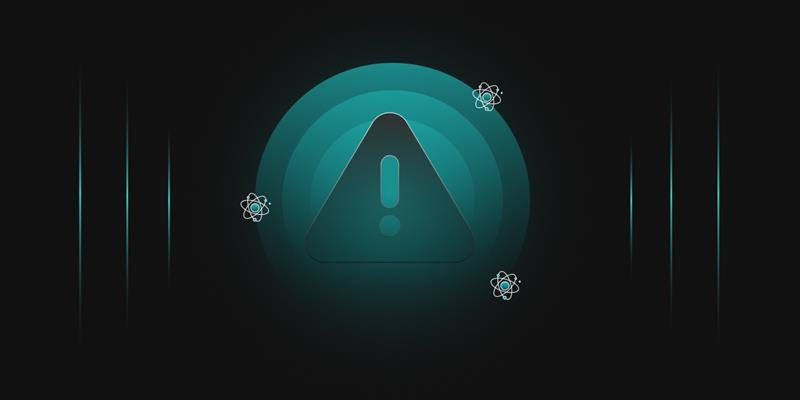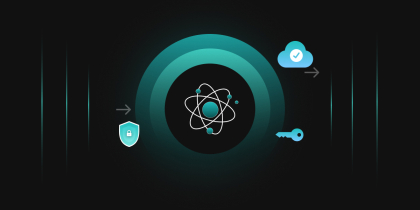- Introduction
- Understanding why Quantum Computing is a Game Changer
- Expanding the Scope of Quantum Threats
- Quantum-Resistant Algorithms
- How Post-Quantum Cryptography Enables Quantum Readiness?
- Transitioning to PQC-Ready Security
- The Key Challenges in PQC Migration
- How Can Encryption Consulting’s PQC Advisory Help?
- Conclusion
Introduction
Ten seconds is all it may take to break the cryptography and open any digital lock protecting your bank accounts, your company secrets, your personal data, etc. We are no longer talking about theory, we are talking about signed software, connections, and PKI infrastructures, all of which are at risk of compromise by a strong quantum computer unless organizations evolve their cryptographic environment.
The clock is ticking because when quantum computers become powerful enough and come into force, they will be able to break algorithms such as RSA and ECC in a few seconds that protect everything in today’s digital world. Therefore, the countdown has already started.
And, what we do today decides what will survive tomorrow. Therefore, let’s explore the risks, the National Institute of Standards and Technology (NIST) approved post-quantum cryptographic standards, and the steps organizations must take now to prepare for the post-quantum era.
Understanding why Quantum Computing is a Game Changer
Quantum computers use the laws of quantum mechanics and are expected to perform calculations exponentially faster than traditional classic computers. This is because, unlike classical computers, which use bits that represent either 0 or 1, quantum computers use qubits, which can represent 0, 1, or both simultaneously. This allows them to perform many calculations in parallel, offering speedup. All the existing cryptographic algorithms, including asymmetric cryptography algorithms such as RSA, ECDH, and ECDSA, can be broken by quantum computers.
For instance, Shor’s algorithm can break RSA encryption exponentially faster than the best-known classical algorithms. This means that a sufficiently powerful quantum computer could decrypt data protected by these cryptographic schemes in a matter of seconds. Therefore, all use cases of these cryptographic functions, including encryption at rest and in transit, will be affected.
The post-quantum era is not about hackers reading old emails. It’s about an impending threat known as ‘harvest now, decrypt later,’ a mechanism where attackers are intercepting and storing the encrypted data today, with a strategy to decrypt it in the future once the quantum computers are readily available to them.
However, the risks posed by quantum computing extend far beyond the delayed decryption of stored data. They threaten the entire infrastructure of digital trust, compromising everything from real-time communications and secure authentication to critical systems that rely on public key infrastructure (PKI) and digital certificates.
Let us break these threats down in detail one by one.
Expanding the Scope of Quantum Threats
Quantum computing introduces several security concerns that could compromise digital infrastructures, not limited to HNDL attacks, as it is just the tip of the threat iceberg. Here’s what is below:
Forged digital signatures
To create digital signatures, algorithms such as RSA and ECDSA are used to digitally sign software, email, documents, etc. Shor’s algorithm can break RSA encryption exponentially faster than the best-known classical algorithms. This is because RSA’s security is based on the difficulty of factoring large prime numbers, a task that would take an impractical amount of time to solve by classical computers. But Shor’s algorithm, running on a quantum computer, can perform this factorization in polynomial time, effectively making RSA insecure.
This implies that attackers could fake software updates to spread malicious packages while faking them to trusted vendors. Furthermore, attackers can impersonate anyone from anywhere without being identified and execute identity theft.
To mitigate this risk, cryptographic communities are actively developing and adopting quantum-resistant signature algorithms, such as CRYSTALS-Dilithium and Falcon, selected through NIST’s PQC standardization process. These algorithms are designed to remain secure even in the face of powerful quantum computers.
Broken PKI Chains
The Public Key Infrastructure (PKI) forms the backbone of secure web communication via HTTPS, email security, and VPNs. Like digital signatures, PKI also depends on algorithms such as RSA and ECC to prove identity and establish trust.
Quantum computing poses a threat to PKI because if these algorithms are broken, malicious actors will be able to create fake certificates for websites, trick users into visiting lookalike pages, and gather and misuse confidential data such as Personally Identifiable Information (PII), Protected Health Information (PHI), etc. Furthermore, TLS and HTTPS connections won’t be trustworthy, and every system trusting digital certificates will be at risk.
To address this, leading standards bodies like NIST and IETF are working to enable quantum-safe PKI frameworks. This includes enhancements to protocols such as TLS 1.3 with hybrid key exchanges and issuing hybrid certificates that embed both classical and post-quantum public keys.
Devices Beyond Repair
Critical systems such as IoT sensors, industrial controllers, medical devices, and satellites use hard-coded cryptographic algorithms, usually RSA or ECC, embedded directly into their firmware or hardware. These devices generally lack the capabilities to update them remotely as they run on low-power microcontrollers with limited memory and processing capacity and are designed for long operational lifespans, often exceeding 10 to 20 years. These devices rely on fixed secure functions that cannot be reprogrammed to support newer, quantum-safe cryptographic algorithms.
To counter this, researchers and vendors are exploring lightweight PQC algorithms such as SPHINCS+ for signatures that may eventually be used for resource-constrained environments.
Quantum-Resistant Algorithms
Since 2016, the NIST has been leading the global unified effort to prepare for the quantum threat. The following are the PQC standards finalized by the NIST, marking a turning point in modern cryptography:
| Algorithm | Type | Use Cases | NIST Standard |
|---|---|---|---|
| ML-KEM | Key Encapsulation | PKI, TLS, VPN, secure messaging | FIPS 203 |
| ML-DSA | Digital Signatures | Code signing, document signing, authentication | FIPS 204 |
| SLH-DSA | Digital Signatures | Long-term signatures, backup for ML-DSA | FIPS 205 |
| FN-DSA (FALCON) | Digital Signatures | Efficient signatures, under evaluation | FIPS 206 |
| HQC | Key Encapsulation | Additional flexibility, backup standard | NIST IR 8545 |
Shifting to post-quantum cryptography (PQC) is a strategic transformation that will take place over the years. Therefore, as quantum-resistance algorithms become operational, organizations must adapt quickly but flexibly, too. And here’s where crypto agility plays a critical role.
As defined in NIST CSWP-39, crypto-agility is the ability to swap out cryptographic algorithms, such as RSA or ECC, for quantum-resistant alternatives without having to redesign or rebuild your entire system. Now let us find out why exactly crypto-agility matters.
With NIST’s selected PQC algorithms to move towards standardization, organizations will have to prepare for multi-stage deployments. And this is where crypto agility ensures that this transition is secure, manageable, and sustainable. It is not just a future-proofing strategy but the only way to make the PQC transition without introducing new vulnerabilities or operational overhead.
To fully unlock the value of crypto agility, organizations need to adopt post-quantum cryptography as a critical step toward achieving real security in the quantum era. So, let’s take a closer look at how post-quantum cryptography powers quantum readiness.
How Post-Quantum Cryptography Enables Quantum Readiness?
A successful migration to post-quantum cryptography requires careful planning and phased execution. This journey can be aligned with a multistep approach, mapping them with the core activities mentioned in the PQC Readiness Framework. So, let’s discuss it in detail.
The PQC Readiness Framework is designed to help organizations assess, strategize, and implement cryptographic changes to ensure security in a post-quantum world. It acts as a step-by-step guide to help organizations prepare for the quantum-threats era. By following this framework, organizations can identify systems at risk, set priorities, and begin upgrading to post-quantum algorithms in a way that is both secure and manageable. It focuses on three key areas: data in transit, data at rest, and technological capabilities.
- Data in transit refers to the protection of data from quantum attacks while it is being transferred over networks or between systems. This includes ensuring the security of Public Key Infrastructure (PKI) , which manages cryptographic keys and certificates, and Hardware Security Modules (HSMs), which play a crucial role in protecting cryptographic keys. Additionally, network security protocols, like TLS and IPsec, need to be secured against quantum threats. Other areas of focus include ensuring the secure file transfer, protecting user, server, or device authentication, and securing code signing to maintain software integrity.
- Data at rest focuses on the protection of stored data. This includes securing applications, ensuring that data stored in databases/big data environments is safe from quantum decryption methods, and protecting file and document storage systems.
-
Technological capabilities that are essential for preparing for quantum computing threats include the following:
- Adopting post-quantum cryptography algorithms such as CRYSTALS-Kyber, CRYSTALS-Dilithium, Falcon, etc., that are resistant to quantum-enabled attacks. Furthermore, implementing Quantum Key Distribution (QKD), which uses principles of quantum mechanics to distribute cryptographic keys securely, allows any two parties to detect eavesdropping attempts by an attacker during the key exchange. This is because effective Key Management Systems (KMSs) will be critical to handling both existing and quantum-safe encryption methods.
- A hybrid solution, combining classical and post-quantum cryptography, can be used as a transitional strategy until full adoption of PQC.
- Additionally, tools for discovery and inventory purposes will help organizations assess their current systems while ensuring third-party security remains intact in the future.
Now, let’s explore a structured approach for conducting a PQC readiness assessment, which is a critical step in ensuring a smooth, secure transition to quantum-resistant encryption. Conducting this assessment is not just a technical step but an important component of broader risk management and security strategy. By identifying where cryptographic assets are used, assessing their exposure to quantum threats, and evaluating the sensitivity of the data they protect, organizations can make informed decisions on where and how to prioritize PQC adoption.
- Cryptographic Discovery: This phase focuses on identifying cryptographic assets across on-premises systems, cloud platforms, and SaaS environments. The goal is to analyze and map how cryptography is currently used , including public keys, protocols, algorithms, and certificates. This process provides a clear, in-depth view of the cryptographic infrastructure, laying a solid foundation for risk management.
- Cryptographic Inventory: Here, organizations document and analyze the cryptographic assets uncovered during discovery, paying special attention to key technologies and encryption mechanisms. A well-maintained inventory not only tracks where and how cryptography is applied but also helps teams understand its role in protecting data and meeting compliance.
- Data classification: The final pillar of the PQC readiness assessment is data classification. In this phase, sensitive data is categorized according to its confidentiality, integrity, and availability requirements, i.e., it helps determine which data types are most at risk from future quantum attacks and guides the selection of appropriate quantum-safe encryption algorithms. This enables organizations to assess risk levels and prioritize which encryption mechanisms need immediate attention as part of their post-quantum transition strategy.
The outcome of this readiness assessment is the PQC Assessment and Gap Analysis Report, an in-depth evaluation of existing cryptographic policies, processes, and regulatory frameworks. By aligning these elements with industry standards and assessing data security controls, organizations can build a resilient, compliant foundation ready to withstand the challenges of a post-quantum world. Building on this foundation, let’s now explore the PQC strategy and how to bring it to life through structured implementation.
- It begins with the Develop phase, where organizations identify cryptographic dependencies across systems and define a phased roadmap. During this phase, organizations should map current cryptographic usage, assess quantum-related risks, and define a phased migration roadmap that prioritizes high-risk or high-value assets.
- Next comes the Update phase. Here, cryptographic libraries, certificates, and security protocols are upgraded. A key best practice here is the adoption of hybrid encryption models, which combine classical and post-quantum algorithms to maintain backward compatibility during the transition. This ensures backward compatibility while preparing systems for quantum-safe algorithms.
- In the Achieve phase, the focus shifts to building a flexible cryptographic framework. This phase enables smooth updates to algorithms over time while ensuring compliance with evolving industry standards and regulations.
- Finally, the Execute phase brings the strategy into action. PQC solutions are rolled out across on-premises, cloud, and SaaS environments. Continuous monitoring, validation, and refinement ensure that security measures stay resilient as threats evolve.
This step-by-step approach not only accelerates the adoption of quantum-safe cryptography but also helps organizations stay secure and compliant and prepares them for the challenges of a quantum-enabled future.
Transitioning to PQC-Ready Security
As quantum computing accelerates toward reality, organizations must shift from traditional cryptographic systems to PQC to maintain digital trust. NIST has set firm timelines to transition the world away from widely used cryptographic algorithms, including RSA-2048 and ECC-256. By 2030, RSA-2048 and ECC-256 will be officially deprecated. Therefore, organizations must transition to PQC algorithms to maintain compliance and security. By 2035, legacy cryptography will be completely disallowed, making PQC adoption mandatory for secure communications.
Therefore, to ensure a smooth and secure transition, many organizations are adopting hybrid cryptography, which combines classical algorithms with quantum-safe algorithms. This approach enables backward compatibility with existing systems while allowing the infrastructure to resist future quantum threats.
This section compares classical cryptography with PQC-ready solutions, showing how adopting quantum-safe standards helps ensure data security, compliance, and secure authentication.
| Aspect | Classical Cryptography | PQC-Ready Cryptography |
|---|---|---|
| CI/CD | Uses traditional cryptographic methods without readiness for post-quantum cryptography (PQC). | Seamless integration with quantum-safe cryptographic standards. |
| Network | Vulnerable to quantum threats due to legacy encryption protocols (TLS, VPNs, etc.). | Upgraded to quantum-resistant protocols (e.g., TLS 1.3 with PQC support) for enhanced security. |
| Hosts | Running outdated encryption libraries and lacking effective key management strategies. | Running hybrid cryptography with both PQC and classical methods for a smooth transition. |
| GRC (Governance, Risk and Compliance) | Lack of visibility of quantum risks, endangering compliance and governance strategies. | Continuous assessment and management of cryptographic risks with fully automated processes. |
| Certificate Management | Uses traditional PKI certificates without quantum-safe algorithms, making them vulnerable to future quantum attacks. | Incorporates quantum-safe certificates with hybrid models (both classical and PQC) to ensure a smooth transition. These certificates use digital signature algorithms like CRYSTALS-Dilithium or Falcon, designed to resist quantum attacks. The hybrid model maintains compatibility with existing systems while enabling security. |
| Databases | Relies on classical encryption methods, exposing sensitive data to quantum computing threats. | Upgrades database encryption to quantum-resistant algorithms, safeguarding sensitive data from future quantum attacks. |
Therefore, migrating to a PQC-ready infrastructure is not just a defensive approach, but it represents a future strategy for building long-term resilience. As seen across critical domains such as CI/CD, networks, hosts, GRC, certificate management, and databases, classical cryptography is no longer sufficient to withstand the threats posed by quantum computing.
By adopting quantum-safe strategies like hybrid cryptography and quantum-resistant certificates, organizations can ensure continuity of operations, enhance cryptographic agility, and comply with future regulatory requirements.
However, organizations must overcome several key technical and operational challenges to enable a secure and scalable migration. In the following section, we’ll explore these challenges in detail and understand why a structured approach is essential for success.
The Key Challenges in PQC Migration
Migrating to Post-Quantum Cryptography (PQC) is a complex yet essential effort for organizations preparing to protect their digital assets against future quantum threats. However, this transition presents a set of challenges across infrastructure, architecture, and policy. Below are some of the most pressing issues organizations go through:
Cryptographic Agility Limitations
Many organizations function on rigid, legacy architectures that lack cryptographic agility. These systems make it difficult to update or replace cryptographic components without significant redesigning of the whole architecture. This results in increased computational overhead and a slower adoption of new cryptographic standards.
Legacy System Compatibility
A major part of the existing infrastructure relies on systems that do not natively support PQC. Upgrading or replacing these legacy systems to support quantum-safe algorithms often leads to high costs and complex integration challenges.
Unclear Cryptographic Inventory
Organizations often struggle with identifying where cryptography is used across their environments. Without a clear inventory of cryptographic assets such as certificates, algorithms, protocols, and keys, planning a structured PQC transition becomes nearly impossible, causing security blind spots.
Integrating PQC into Existing Systems
Incorporating PQC into current infrastructures is not straightforward. Many systems are deeply integrated with RSA, ECC, and other legacy algorithms. Replacing or layering PQC on top of these mechanisms requires careful planning to maintain compatibility, minimize downtime, and avoid introducing new vulnerabilities.
Selection of Secure PQC Algorithms
While NIST has standardized several PQC algorithms, choosing the right ones involves trade-offs. Organizations must analyze options based on key size, computational efficiency, and resource usage. Not all PQC algorithms are suited for every use case. Therefore, algorithm selection is a strategic task.
Securing Stored Data
Quantum threats don’t just impact live communications but also put long-lived stored data at risk. To mitigate this, organizations must proactively re-encrypt or securely archive sensitive data using quantum-resistant algorithms. This often requires selective and phased re-encryption strategies based on the data classified.
How Can Encryption Consulting’s PQC Advisory Help?
- Validation of Scope and Approach: We assess your organization’s current encryption environment and validate the scope of your PQC implementation to ensure alignment with the industry’s best practices.
- PQC Program Framework Development: Our team designs a tailored PQC framework, including projections for external consultants and internal resources needed for a successful migration.
- Comprehensive Assessment: We conduct in-depth evaluations of your on-premises, cloud, and SaaS environments, identifying vulnerabilities and providing strategic recommendations to mitigate quantum risks.
- Implementation Support: From program management estimates to internal team training, we provide the expertise needed to ensure a smooth and efficient transition to quantum-resistant algorithms.
- Compliance and Post-Implementation Validation: We help organizations align their PQC adoption with emerging regulatory standards and conduct rigorous post-deployment validation to confirm the effectiveness of the implementation.
Conclusion
While quantum-based cryptography may still be years or even decades away, its impact will be immediate and far-reaching once it arrives. Waiting until the moment quantum computers become practical is not an option. By then, it will be too late to secure our security systems, reissue certificates, or rebuild trust chains.
Therefore, organizations and security leaders must act now. Developing a post-quantum transition plan, investing in crypto-agility, and aligning with NIST’s standards will be the critical steps to ensure continuity, compliance, and resilience in the quantum era. If you are wondering about where and how to start, we, Encryption Consulting, are here to help you. You can count on us as your trusted partner in PQC Advisory Services. Reach out to us at info@encryptionconsulting.com to build a plan that fits your needs.
- Introduction
- Understanding why Quantum Computing is a Game Changer
- Expanding the Scope of Quantum Threats
- Quantum-Resistant Algorithms
- How Post-Quantum Cryptography Enables Quantum Readiness?
- Transitioning to PQC-Ready Security
- The Key Challenges in PQC Migration
- How Can Encryption Consulting’s PQC Advisory Help?
- Conclusion




